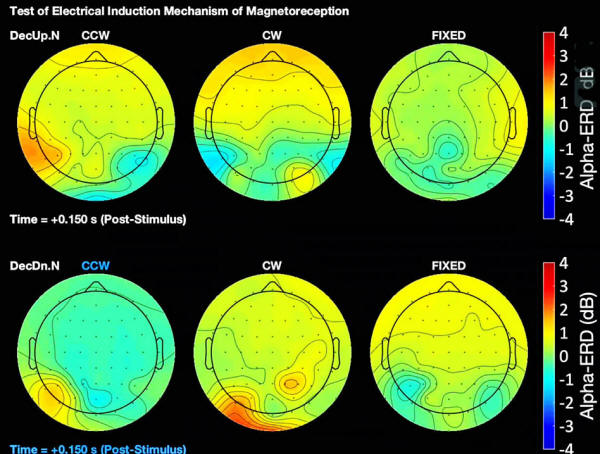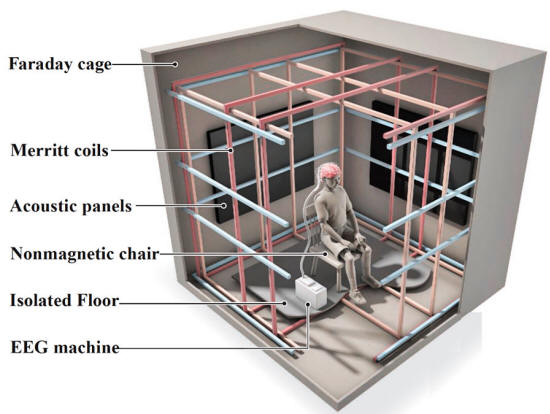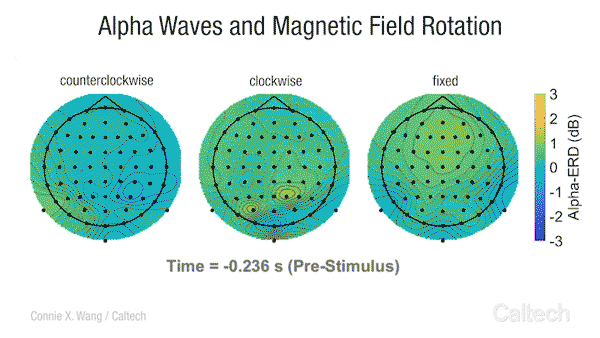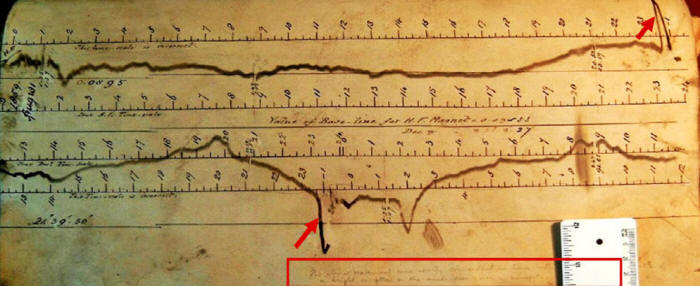|
from SpaceWeatherArchive Website
In this state your brain
is filled with "alpha waves," a type of electrical brainwave
associated with wakeful relaxation.
A new study (Transduction
of the Geomagnetic Field as Evidenced from Alpha-band Activity in
the Human Brain) just published in the journal eNeuro
by researchers at Caltech offers convincing evidence that changes in
Earth's magnetic field can suppress alpha waves in
the human brain.
human magneto-reception test chamber at Caltech. This diagram was modified from the figure "Center of attraction"
by
C. Bickel (Hand, 2016).
For instance, honeybees, salmon, turtles, birds, whales, and bats use the geomagnetic field to help them navigate, and dogs can be trained to locate buried magnets.
To find out if humans can indeed sense magnetic fields, the researchers built an isolated radiofrequency-shielded chamber where participants sat in utter darkness for an hour.
As magnetic fields
shifted silently around the chamber, participants'
brain waves were measured using
electrodes positioned at 64 locations on their heads.
Additional runs of the experiment showed that the effect was reproducible.
changes in alpha brainwave amplitude following rotations of an Earth-strength magnetic field. On the left, counterclockwise rotations induce a widespread drop in alpha wave amplitude. The darker the blue color, the more dramatic the drop.
This led the researchers to suggest it may be vestigial, some remnant of an ancient ability to navigate using local magnetic cues.
an old Greenwich Observatory magnetometer shows sudden changes in the magnetic field caused by an intense solar flare on Sept. 1, 1859. (From Cliver & Keer 2012,
with
permission of Solar Physics.)
During the Carrington Event of Sept. 1859, for instance, compass needles at mid-latitudes swung back and forth by several degrees.
The Caltech study didn't look at such small changes, however.
Magnetic fields inside
their test chamber shifted plus or minus 90 degrees at least. As a
result, we do not yet know if human magneto-recepton is sensitive
enough to detect the more subtle changes typically associated
with space weather.
|





